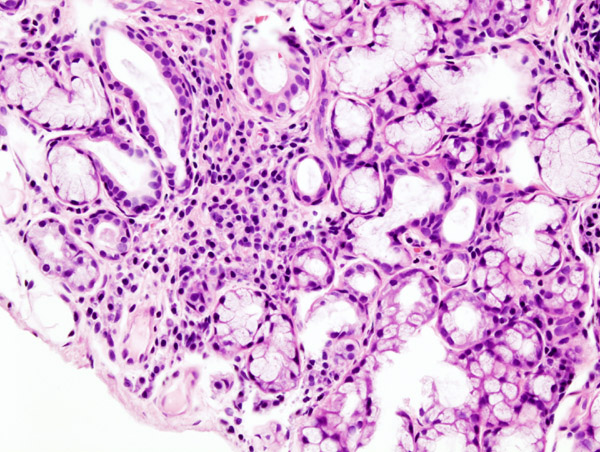Sjögren Syndrome

Sjögren syndrome is a disorder whose main features are dry eyes and a dry mouth. The condition typically develops gradually beginning in middle adulthood, but it can occur at any age.
Sjögren syndrome is classified as an autoimmune disorder, one of a large group of conditions that occur when the immune system attacks the body's own tissues and organs. In Sjögren syndrome, the immune system primarily attacks the glands that produce tears (the lacrimal glands) and saliva (the salivary glands), impairing the glands' ability to secrete these fluids.
Dry eyes may lead to itching, burning, a feeling of sand in the eyes, blurry vision, or intolerance of bright or fluorescent lighting. A dry mouth can feel chalky or full of cotton, and affected individuals may have difficulty speaking, tasting food, or swallowing. Because saliva helps protect the teeth and the tissues of the oral cavity, people with Sjögren syndrome are at increased risk of tooth decay and infections in the mouth.
In most people with Sjögren syndrome, dry eyes and dry mouth are the primary features of the disorder, and general health and life expectancy are largely unaffected. However, in some cases the immune system also attacks and damages other organs and tissues. This complication is known as extraglandular involvement. Affected individuals may develop inflammation in connective tissues, which provide strength and flexibility to structures throughout the body. Disorders involving connective tissue inflammation are sometimes called rheumatic conditions. In Sjögren syndrome, extraglandular involvement may result in painful inflammation of the joints and muscles; dry, itchy skin and skin rashes; chronic cough; a hoarse voice; kidney and liver problems; numbness or tingling in the hands and feet; and, in women, vaginal dryness. Prolonged and extreme tiredness (fatigue) severe enough to affect activities of daily living may also occur in this disorder. A small number of people with Sjögren syndrome develop lymphoma, a blood-related cancer that causes tumor formation in the lymph nodes.
Some individuals who are first diagnosed with another rheumatic disorder, such as rheumatoid arthritis or systemic lupus erythematosus, later develop the dry eyes and dry mouth characteristic of Sjögren syndrome. Other autoimmune disorders can also develop after the onset of Sjögren syndrome. In all, about half of all individuals with Sjögren syndrome also have another autoimmune disorder.
Frequency
Sjögren syndrome is a relatively common disorder; it occurs in 0.1 to 4 percent of the population. It is difficult to determine the exact prevalence because the characteristic features of this disorder, dry eyes and dry mouth, can also be caused by many other conditions. Women develop Sjögren syndrome about 10 times more often than men; the specific reason for this difference is unknown but likely involves the effects of sex hormones on immune system function.
Causes
Sjögren syndrome is thought to result from a combination of genetic and environmental factors; however, no associations between specific genetic changes and the development of Sjögren syndrome have been confirmed. Researchers believe that variations in many genes affect the risk of developing Sjögren syndrome, but that development of the condition may be triggered by something in the environment. In particular, viral or bacterial infections, which activate the immune system, may have the potential to encourage the development of Sjögren syndrome in susceptible individuals. The genetic variations that increase susceptibility may reduce the body's ability to turn off the immune response when it is no longer needed.
Inheritance Pattern
A predisposition to develop autoimmune disorders can be passed through generations in families. Relatives of people with Sjögren syndrome are at an increased risk of developing autoimmune diseases, although they are not necessarily more likely to develop Sjögren syndrome in particular. The inheritance pattern of this predisposition is unknown.